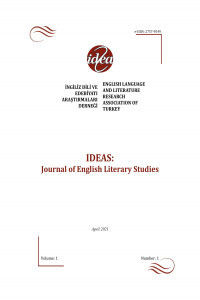“Presume not that I am the thing I was”: The Transformation of the Idea of the King and the Concept of Kingship in Shakespeare’s Henriad
“Presume not that I am the thing I was”: The Transformation of the Idea of the King and the Concept of Kingship in Shakespeare’s Henriad
Shakespeare, History Plays, Henriad, Concept of Kingship Henry V,
___
- Bloom, Harold. Shakespeare: The Invention of the Human. Riverhead, 1998.
- Carroll, William C. “Theories of Kingship in Shakespeare’s England.” A Companion to Shakespeare’s Works, Volume II: The Histories. Edited by Richard Dutton and Jean E. Howard, Blackwell, 2003, pp. 125–145.
- Crewe, Jonathan. “Henry IV, Part 2: A Critical History.” A Companion to Shakespeare’s Works, Volume II: The Histories. Edited by Richard Dutton and Jean E. Howard, Blackwell, 2003, pp. 432–450.
- Hadfield, Andrew. “Henry V.” A Companion to Shakespeare’s Works, Volume II: The Histories. Edited by Richard Dutton and Jean E. Howard, Blackwell, 2003, pp. 451–467.
- Heims, Neil. Bloom’s How to Write about Shakespeare’s Histories. Chelsea House, 2010.
- Hopkins, Lisa. “The King’s Melting Body: Richard II.” A Companion to Shakespeare’s Works, Volume II: The Histories. Edited by Richard Dutton and Jean E. Howard, Blackwell, 2003, pp. 395–411.
- Knowles, James. “Henry IV.” A Companion to Shakespeare’s Works, Volume II: The Histories. Edited by Richard Dutton and Jean E. Howard, Blackwell, 2003, pp. 412–431.
- Machiavelli, Niccolò. The Prince. Translated by C. E. Detmold, Wordsworth, 1997.
- Shakespeare, William. The Arden Shakespeare Complete Works. Edited by Richard Proudfoot et al. The Arden Shakespeare, 2021.
- Başlangıç: 2021
- Yayıncı: İngiliz Dili ve Edebiyatı Araştırmaları Derneği / English Language and Literature Research Association of Turkey
Ruinscapes and Subversion of Temporalities in 'For the Mercy of Water'
“Pocket full of seeds”: A Review of Experiencing Poetry: A Guidebook to Psychopoetics
The Chicana Narrator as Healer: Reconciliation in Ana Castillo’s So Far From God
Thomas Shadwell’in The Libertine Oyununda Abartılan Libertinizmin Bir Eleştirisi
From Androgynous to Hybrid Cybernetic Bodies: Salvation or More Subjugation?
